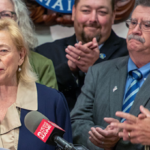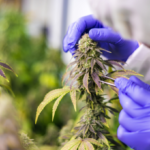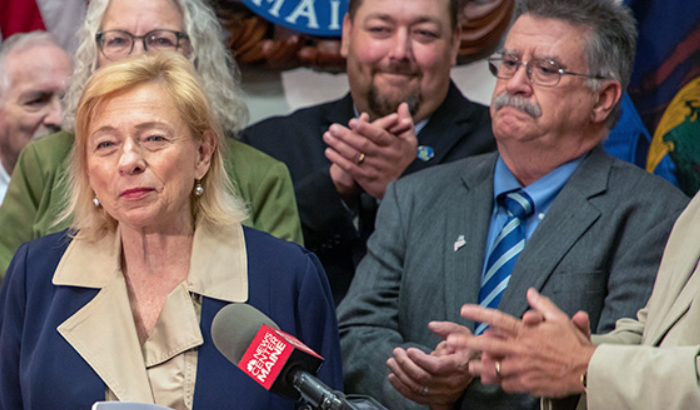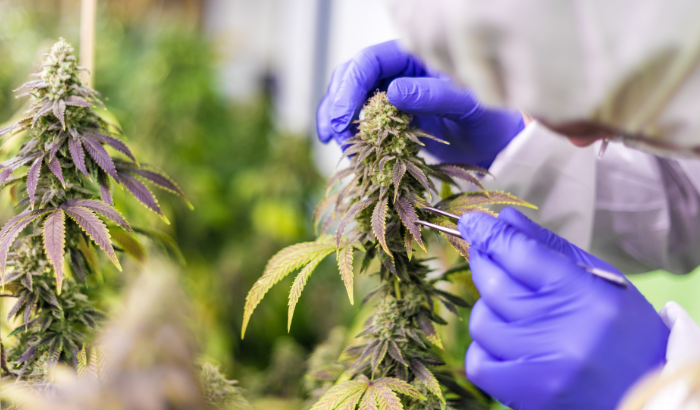
EDITED BY GEORGE W. HIGHTOWER
There’s always been delivery, but this is how regulated Home Delivery Operators will work
Cannabis home delivery has been a hot topic in Massachusetts since May 2020 and will likely remain in the news for some time to come. In this multi-part series we explore what’s going on and how it might impact the various groups who have a dog in this fight. Rumors and speculation abound about how home delivery will work when the rubber hits the road. Unfortunately, some corners of the more established cannabis industry are creating and stoking fear in hopes of scuttling the license class before it gets traction. Today we explore the potential municipal impacts from home delivery.
While many future delivery clients view home drop-offs as an entirely new process, in truth it has been functioning very successfully for years.
Success can be measured by delivery operators’ ability to remain under law enforcement’s radar. It is currently estimated that more than 70% of the cannabis consumed in Mass is obtained through this methodology. In the days of old, one would call their preferred dealer, meet, and complete the transaction face-to-face. In the current climate, unregulated delivery operators service nearly every municipality in the state, and there are many of them. Some have websites and carefully screen customers to weed out law enforcement moles.
Others use Instagram. Under the Instagram model, the operator will post a menu, customers DM their requests, orders are packed and delivered, and customers pay either with cash or one of a handful of peer-to-peer payment platforms—from Venmo to Zelle or even ApplePay. Like in the soon-to-arrive regulated delivery market, operators make ample use of electronic communications and unmarked vehicles [or bicycle couriers in dense urban areas]. However, unregulated delivery operators do not pay taxes, pay no community impact fees, and do not pay payroll taxes or health care benefits to staff. They do, however, remain quietly under the radar, rarely causing disruption within the communities they serve.
Regulated and licensed delivery operators will be forced to collect and remit sales taxes, must pay community impact fees, and have no choice but to pay payroll taxes and provide employee benefits. Here’s a closer look …
Home Delivery Operators (HDO) purchase cannabis flower and products (edibles, lotions, etc.) on a wholesale basis from licensed cultivators and product manufacturers and proceed to store these products in a secure and alarm-equipped inventory room. Many municipalities are requiring delivery offices to undergo the same rigorous security buildouts. Below is a potential scenario of the step-by-step process that occurs when a consumer places a home delivery order.
1—To place an order via internet or phone, a consumer must sign up in advance and provide their full legal name as it appears on a valid and unexpired government-issued photo identification card, their residential address (which must match the address listed on the ID), an email address and cell phone number (capable of receiving a text message), their date of birth (to confirm they are at least 21 years of age), and an uploaded image of their ID. The HDO dispatch staff will confirm the ID is valid, the information input matches the information on the ID, and that the address of the consumer’s residence is not a restricted delivery address.
2—Marijuana delivery operators are “prohibited from delivering to college or university dormitories; and federal public housing identified at https://resources.hud.gov/.” The Cannabis Control Commission also restricts deliveries to bed-and-breakfast establishments, hotels, motels and other commercial hospitality operations.
3—With these confirmations complete, a consumer may then place an online order.
4—Orders are packed by company employees. Temporary staffing agents or contract laborers are prohibited by regulation. All employees are pre-screened by the Commission and must have a valid Commission-issued Marijuana Establishment Registered Agent card on display at all times or they are not eligible to work. On an annual basis, all operational staff must complete a Responsible Vendor Training program.
5—Packed orders are separated by route and placed in a secure, locked vessel. The vessel is loaded into the vehicle and locked in place so as to be tamper-resistant and theft-proof. The tamper-resistant strongbox must be firmly affixed to the vehicle.
6—The delivery agent brings the order to the customer’s door and checks their ID. Some operators will go an extra step and use a portable, electronic, ID scanner before handing the order over.
Here’s what’s important to know:
-
Orders can only be handed to the name on the manifest. If a wife places an order but only the husband is home, the delivery will not be completed. If no one is home or the customer is not available, the order is returned to the warehouse. Orders can only be handed to the intended recipient. Order deliveries cannot be diverted to another address or left in a “safe place” (like open the side door of my garage and leave it on top of the recycle bin; I’ll get it when I get home—nope!) to be retrieved later.
-
Delivery agents (the staff member who retrieves the order from the locked storage unit in the vehicle, brings it to the door, checks the ID, and hands the order over) must wear body cameras to record all customer interactions. Videos are stored for 90 days and then deleted.
-
Vehicles are staffed with a driver and delivery agent. No firearms are allowed by Commission regulation. One staff must be with the vehicle at all times the vehicle has marijuana on board. Vehicles must be owned or leased by the Marijuana Delivery Operator. Vehicles cannot have any markings on them and must be outfitted with additional security including 2-way communications, cameras, GPS, and the locked in place inventory locker.
-
Only pre-packed orders may be loaded into the vehicle. Delivered inventory is limited to a maximum total value per vehicle of $10,000. Unlike California, which allows delivery vehicles to carry inventory and fill orders on the fly as the vehicle drives to a customer (the so-called ice cream truck model), Massachusetts prohibits that approach.
-
Deliveries can only take place between 8am and 9pm, unless otherwise restricted by the local municipality.
-
Drivers leave with a manifest for each order, either in a hard copy or on an electronic tablet.
-
Driver teams must check in with the dispatcher at least once every 30 minutes throughout the delivery route.
-
All orders are prepaid and so delivery agents do not handle cash (other than gratuities). (Regulations do not require pre-payment of orders but most delivery operators we have spoken with expect to require payment when the order is placed). All cash collected must, by regulation, be deposited into a secure cash box, affixed to the vehicle interior. Generally speaking, drivers do not carry cash. Customers pay at the time they place their order.
-
The warehouse facility does not allow walk-in business. Online orders may only be delivered to the consumer’s residential address as listed on their ID.
-
The warehouse employs order processors, order packers, a dispatcher, and other support staff. All inventory is tracked in the Commission’s METRC system and sales must be reported in detail to the Commission. There is no wiggle room for error or omission.
-
Orders are packed throughout the day. Generally, drivers will leave the facility in shifts. The first wave leaves around 7 to 7:30am, to arrive at their first stop by 8am. Subject to demand, a second wave of drivers might leave between 1 and 3 pm and will complete their last delivery by 9pm.
-
Retailers in tight urban areas might send out drivers with a few orders at a time, but that will likely be the exception and will be for tightly populated market areas.


























